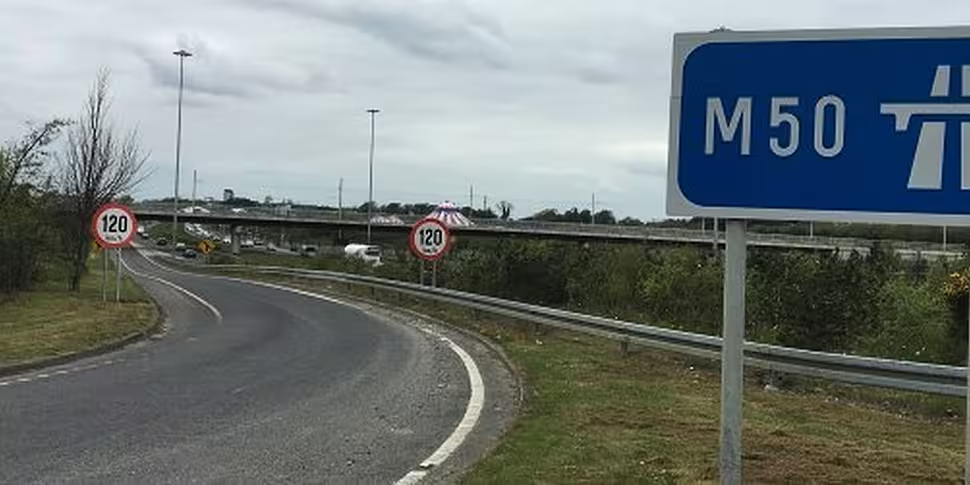The M50: no road in Ireland is as busy - and no road has been quite as controversial - as Dublin’s orbital motorway.
The development of the motorway was a lengthy process, with the M50 as we know it now the culmination of almost three decades of planning and work (not to mention a cost in the billions of euro).
For those unfamiliar with the road, the 45.5km motorway begins at Dublin Port (Junction 1) and travels out towards Coolock & Dublin Airport. It then follows a long route around the city outskirts out to Junction 17, where it ultimately joins up with the M11 at Loughlinstown & Shankill (near the Wicklow border).
It’s not just for local commuters, though: for anyone travelling anywhere else in the country, the M50 serves as a significant link between the capital and other major national roadways.
The first stretch of the M50 to be completed was the Western Parkway, which opened in 1990 after three years of construction. The Northern Cross and Southern Cross were officially opened in 1996 and 2001 respectively, while 2005 saw the completion of the South Eastern stretch. Finally, in December 2006, the 4.5km Port Tunnel was officially opened - linking the rest of the road with the Dublin Port.
To say the M50 is a ‘busy road’ is an immense understatement. Traffic has steadily increased across the motorway each year. Data from the motorway’s toll section alone showed average daily traffic of 135,600 journeys a day, which was up from the 127,500 average recorded in 2015 (there does tend to be seasonal fluctuations in traffic, with the fourth quarter of every year typically quieter).
Such a volume of traffic can obviously be quite lucrative: data from toll operators shows they brought in revenue of around €120 million in 2016. The revenue goes to Transport Infrastructure Ireland (TII), who use the money to fund the "operation and maintenance of the national road network in Ireland".
The consequences of such a busy thoroughfare, however, will be immediately apparent to anyone who has ever found themselves stuck in traffic along the road.
Congestion on the M50
Heavy traffic has been the seemingly perpetual headache for M50 planners and commuters alike. Congestion and tailbacks remain a regular, even daily occurrence.
The most important effort to alleviate this particular problem came in the form of the massive €950m upgrade project that was completed in 2010. Measures taken included the addition of extra lanes along stretches of the motorway, significant alterations to various interchanges, and the introduction of barrier-free tolling. Capacity was increased, and many notable ‘choke points’ were redesigned.
While the situation has certainly improved as a result, traffic still causes almost daily problems along the road (and on the smaller roads leading off the motorway).
TII observed last year: “Heavy congestion resulting from traffic volumes of up to 6,400 vehicles per hour in each direction and further exasperated by collisions is an almost daily occurrence on the M50”.
The TII report also noted that around 120 ‘incidents’ - a broad description which encompasses everything from breakdowns to multi-vehicle collisions - happen on the M50 in a typical month, with around half occurring during rush hour.
Unique features of the M50
Removal of the Toll booths at the first day of Barrier-Free Tolling on the M50. Image: RollingNews.ie
The barrier-free tolling - which has been in place since 2008 - is one of the more noteworthy technological features of the M50. Indeed, it's the only one of Ireland's 11 toll roads without a traditional 'toll plaza'.
Currently tolls range from €2.10 for a car with a ‘tag account’ to €6.30 for unregistered heavy vehicles. For many, the toll system is hassle free through the use of automatic electronic tags, but those without need to pay online, by phone, or at a 'Payzone' retail point by 8pm the following day.
Ultimately, 97% of tolls are paid. Non-payment, however, can result in a series of escalating consequences - ranging from incremental penalties to possible legal proceedings. 65 vehicles were seized for non-paid tolls in 2016, while 574 criminal summonses were issued.
It might be a bit strong to suggest a motorway can have ‘character’, but a few little quirks did make it through the building and development process. To pick perhaps the most obvious example: the M50 has no ‘Junction 8’.
Sean O’Neill of the National Roads Authority told TheJournal.ie in 2015 that there had been plans for the M50 to connect to a road towards Naas at a planned Junction 8, but changes to the zoning of the land meant that plan never came to fruition. As a result, a ‘gap’ between junctions 7 and 9 still exists today.
Are We There Yet? All this week on Newstalk, on air and online, we’ll be taking a closer look at the M50 and commuting in Ireland. You can find out more here.










